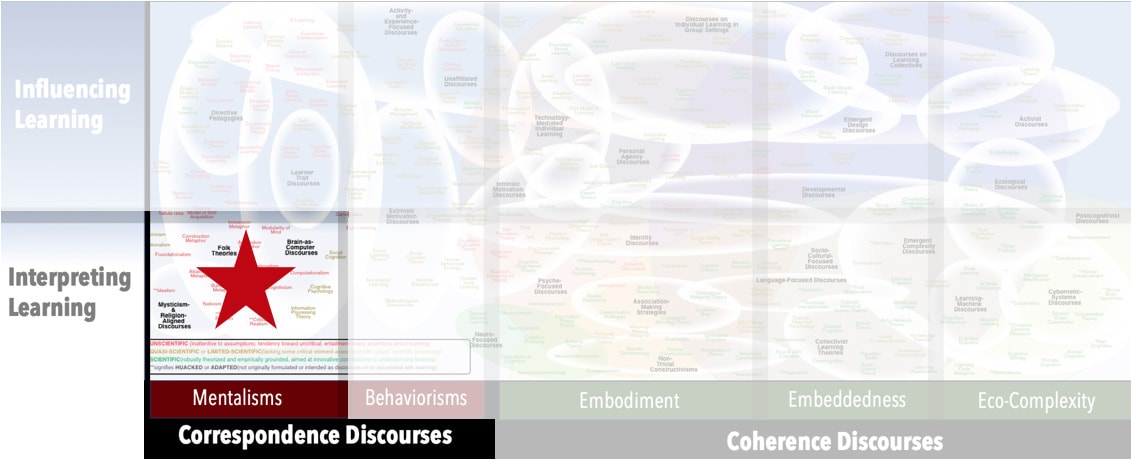AKA
Cognitive Constructivism
Naïve Constructivism
Trivial Constructivism
Focus
Learning as assemblingPrincipal Metaphors
- Knowledge is … assembled object
- Knowing is … what one has put together
- Learner is … a builder (individual)
- Learning is … assembling, putting together
- Teaching is … giving access; making components available
Originated
Ancient (entrenched in the language)Synopsis
The Construction Metaphor frames learning in terms of individuals assembling an internal model of the outside world, based on bits of information received from that world. In its most trivial and common usage, it is only a modest variation of the Acquisition Metaphor, retaining separations of inside from outside, mental from physical, and knowledge from known. More radical uses of the metaphor are encountered among Embodiment Discourses. Associated discourses include:- Exogenous Constructivism – a direct interpretation and/or application of the Construction Metaphor – that is, interpreting learning as taking in information materials in order to internally reconstruct the external world
- Endogenous Constructivism – a blend of the Construction Metaphor and Nativism, suggesting that learning is about constructing new mental structures out of pre-existing mental structures (i.e., without the direct input of information from the environment)
- Noegenesis (Noegenetic Cognitive Laws) (Charles Spearman, 1920s) – a set of three laws proposed to account for new learning: (1) Apprehension of Experience, by which one becomes aware of a fundament; (2) Eduction of Relations, by which the apprehension of two fundaments may educe a relation between them; (3) Eduction of Correlates, by which the presentation of a fundament and a relation may educe to a new fundament
Commentary
Perhaps the most positive thing that can be said about the Construction Metaphor is that it ascribes learners more agency that its more popular counterpart, the Acquisition Metaphor. That said, in its most common usages, it does little to interrupt the uncritical and indefensible assumptions about learning that are associated with most Folk Theories, and so may do more harm than good – especially when invoked in presented in discussions of formal education as some sort of new insight. Sometimes passed off as the core of Non-Trivial Constructivisms, this metaphor in fact falls far short of the disruptive insights of that frame.Authors and/or Prominent Influences
As with many other Folk Theories, it is impossible to date this metaphor. Shades of it appear in ancient Greek thought, so it dates back at least millennia.Status as a Theory of Learning
The Construction Metaphor is a Folk Theory.Status as a Theory of Teaching
While not a theory of teaching, interpreting learning as putting things together has risen to extreme popularity over the past half century – often under the (false) pretense of embracing Non-Trivial Constructivisms. For the most part, a trivial usage of the metaphor prompts little change to traditional, standardized classroom practices.Status as a Scientific Theory
In spite of its popularity and resilience, the Construction Metaphor meets none of our requirements of a scientific theory.Subdiscourses:
- Endogenous Constructivism
- Exogenous Constructivism
- Noegenesis (Noegenetic Cognitive Laws)
Map Location

Please cite this article as:
Davis, B., & Francis, K. (2023). “Construction Metaphor” in Discourses on Learning in Education. https://learningdiscourses.com.
⇦ Back to Map
⇦ Back to List
